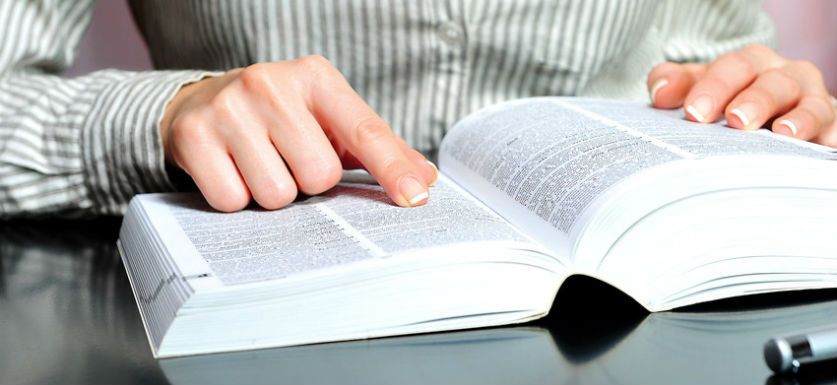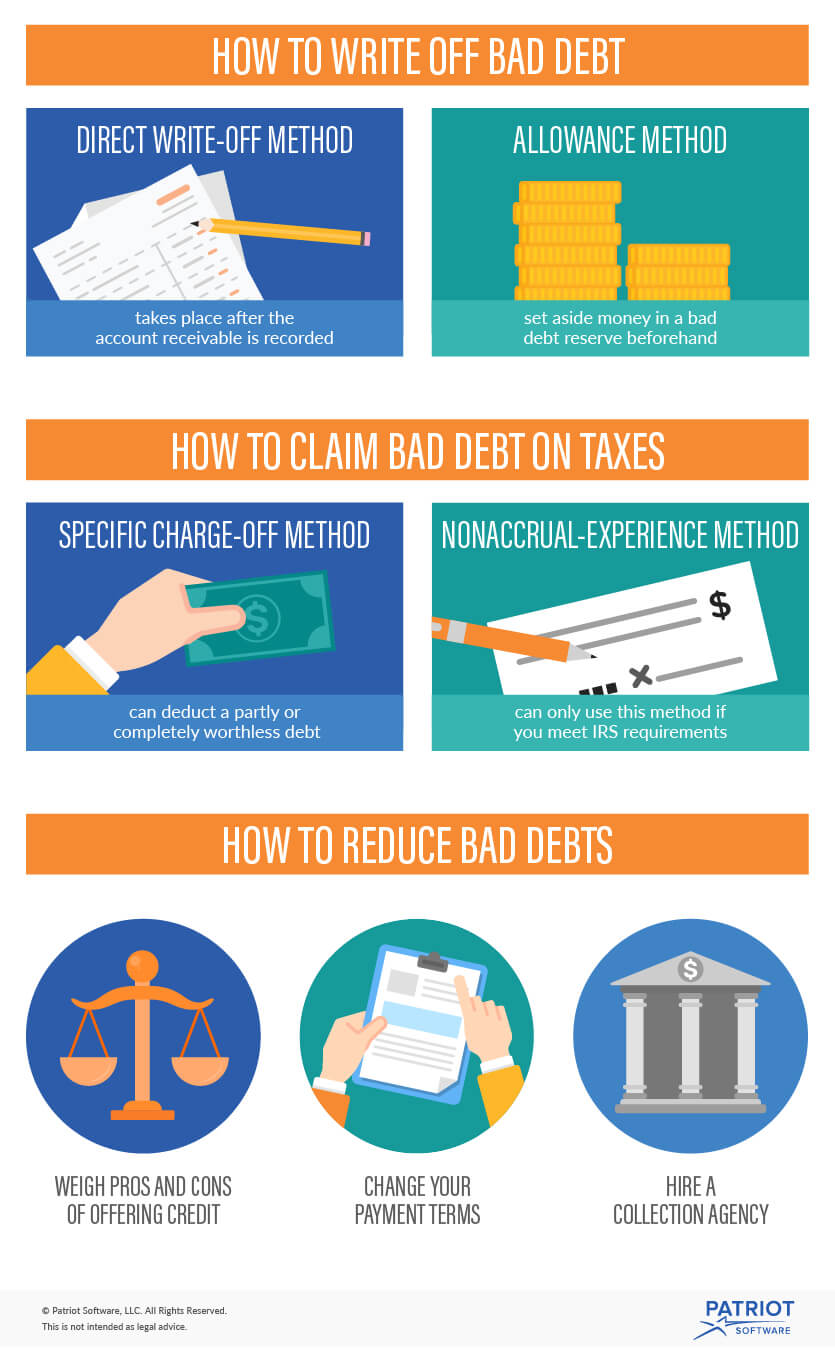When customers make purchases on credit, you expect them to pay you. If they don’t, it can be frustrating and hurt your business. You need to know how to write off bad debt when this happens.
What is bad debt?
Bad debt is when someone owes you money, but the debt becomes worthless (amounts to nothing) because you can’t collect it. Both businesses and individuals can incur bad debt.
A business bad debt is a debt you incur from a business-related activity. You cannot collect the debt, but you previously reported it in your books and gross income. Here are some ways you can incur a bad debt:
- Credit sales to customers
- Loans to clients and vendors
- Business loan guarantees
Generally, the number one reason a business has a bad debt is because they sold a good or service to a customer on credit, and the customer never paid. With credit, a customer receives their good or service and later receives an invoice for the amount they owe.
How to write off bad debt
Accounting for bad debt expenses can be time-consuming and costly. If you use accrual accounting, you mark owed payments as accounts receivable. Accounts receivable is money someone owes you.
When money owed to you becomes a bad debt, you need to write it off. Writing it off means adjusting your books to represent the real amounts of your current accounts.
To write off bad debt, you need to remove it from the amount in your accounts receivable. Your business balance sheet will be affected by bad debt. There are two methods you can use to write off a bad account:
- Direct write-off method
- Allowance method
Direct write-off method
The direct write-off method takes place after the account receivable was recorded. You must credit the accounts receivable and debit the bad debts expense to write it off.
| Date | Account | Notes | Debit | Credit |
|---|---|---|---|---|
| 4/3 | Accounts Receivable Inventory |
Sales to customer | 4,000 | 4,000 |
| 12/2 | Bad Debts Expense Accounts Receivable |
Lack of customer payment | 4,000 | 4,000 |
Allowance method
With the allowance method, you predict that you won’t receive payment for credit sales from all your customers. As a result, you debit bad debts expense and credit allowance for doubtful accounts. When there is a bad debt, you will credit accounts receivable and debit allowance for doubtful accounts.
You can use your bad debt rate from previous years to determine the amount to set aside for your bad debt reserve. For example, last year you brought in $30,000, but you sold $40,000 worth of goods. Under the allowance method, you could predict 25% of your profits will be bad debts.
| Date | Account | Notes | Debit | Credit |
|---|---|---|---|---|
| 4/3 | Bad Debts Expense Allowance for Doubtful Accounts |
Sale to customer | 4,000 | 4,000 |
| 12/2 | Allowance for Doubtful Accounts Accounts Receivable |
Lack of customer payment | 4,000 |
4,000 |
The allowance method aims to increase the accuracy of your books so you don’t anticipate having more money than you will have.
How to claim bad debt on taxes
If the bad debt was included in your gross income, you can claim it with the IRS using the specific charge-off method or the nonaccrual-experience method. This reduces your tax liability. In most cases, you are required to use the specific charge-off method.
Specific charge-off method
Under this method, you can deduct bad debts that are partly or completely worthless. Partly worthless means that the debtor paid part of what they owe. Completely worthless means that the debtor has paid nothing. For both, you can expect that you will not receive any owed money. You can only deduct the amount you charged off on your books.
You can only claim a bad debt by a certain deadline. For a totally worthless debt, you need to file by either seven years from the original return due date or two years from when you paid the tax, whichever is later.
For a partly worthless debt, file your claim by three years after filing the original return or two years from when you paid the tax, whichever is later.
To claim the bad debt, file one of the following forms:
- Form 1040X: Sole proprietor
- Form 1120X: Corporation
- Form 1120S: S corporation
- Form 1065X (paper) or Form 1065 (electronic): Partnership
Nonaccrual-experience method
You can use this method if you use accrual accounting, have an average of less than $5 million in gross receipts for all prior years, and provide services in accounting, actuarial science, architecture, consulting, engineering, health, law, or the performing arts.
For more information, consult the IRS.
How to reduce bad debts
For a business that provides a service or sells goods on credit, bad debts might be inevitable. But, there are steps you can take to reduce bad debts.
Offering customers goods and services on credit is a great way to make big sales, but it could end up costing you if the customer never pays. You could decide not to offer credit, or you could learn what to do when a customer won’t pay you.
If you decide to continue offering credit to customers, you might consider changing your payment terms. Make sure the customer understands when their payment is due when you make the sale. Send payment reminders and reach out to late-paying customers.
When you make a large sale and don’t receive payment, you can even hire a collection agency.
You can’t always control bad debts, but you can work toward making sure they happen less frequently by pursuing payment.
Effects of bad debt on a company
Bad debt can be harmful to your business, especially if it happens frequently. Not being able to collect payments when you provide a good or service can slow down your cash flow. And, it can make your business’s bottom line negative.
Cash flow is the money that goes in and out of your business. If you spend more than you receive, your company will have negative cash flow. When you give a customer a good or service, you are spending money on the cost of goods sold (COGS) but not receiving anything in return.
Let’s say you own a company that sells copy machines. You sell one to a customer for $2,500, but they do not pay immediately. You send out invoices to no avail. You included $2,500 in your gross income, but you now need to write off the bad debt, which decreases your cash flow by $2,500.
To help avoid incurring bad debts, keep track of your business finances. Patriot’s online accounting software lets you create and send invoices, track money owed to you, and record payments. That way, you can stay on top of your debtors. Try it for free today!
This is not intended as legal advice; for more information, please click here.

